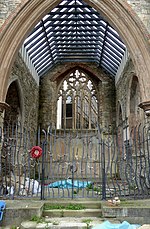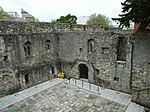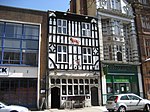St Michael's Church, Southampton
1070 establishments in England11th-century church buildings in EnglandChurch of England church buildings in HampshireChurches in SouthamptonEngvarB from October 2013 ... and 2 more
Grade I listed churches in HampshireHistory of Southampton

St. Michael the Archangel Church is the oldest building still in use in the city of Southampton, England, having been founded in 1070, and is the only church still active of the five originally in the medieval walled town. The church is a Grade I Listed building.
Excerpt from the Wikipedia article St Michael's Church, Southampton (License: CC BY-SA 3.0, Authors, Images).St Michael's Church, Southampton
Church Walk, Southampton St Mary's
Geographical coordinates (GPS) Address External links Nearby Places Show on map
Geographical coordinates (GPS)
| Latitude | Longitude |
|---|---|
| N 50.89959 ° | E -1.40515 ° |
Address
St Michael's Church
Church Walk
SO14 2AB Southampton, St Mary's
England, United Kingdom
Open on Google Maps










